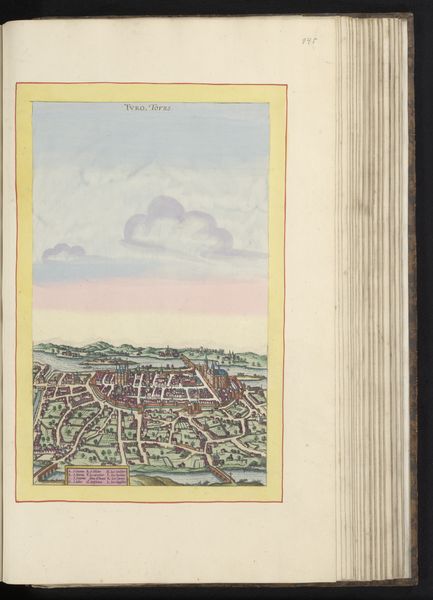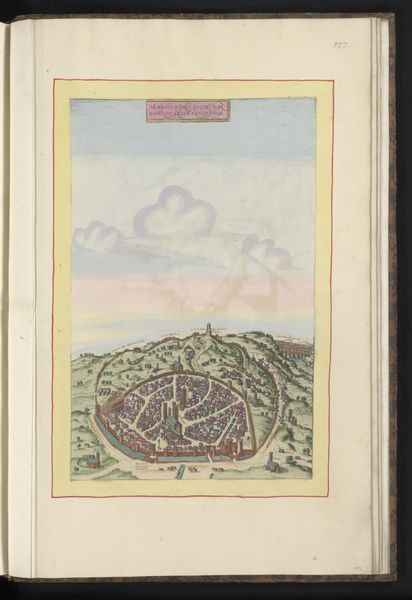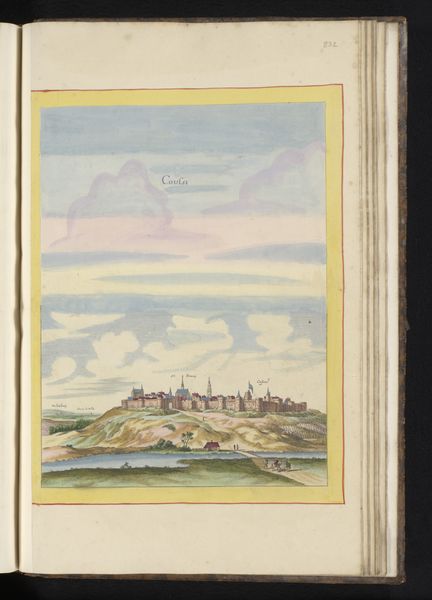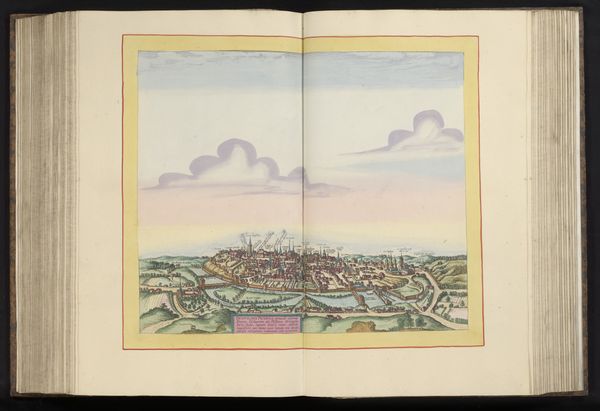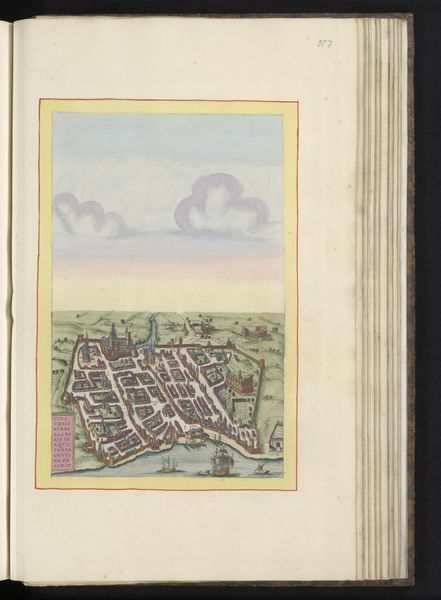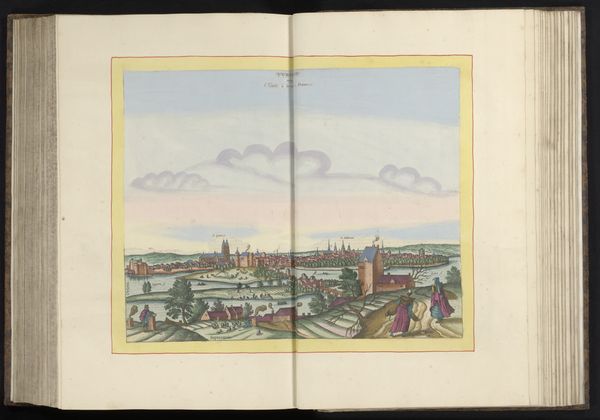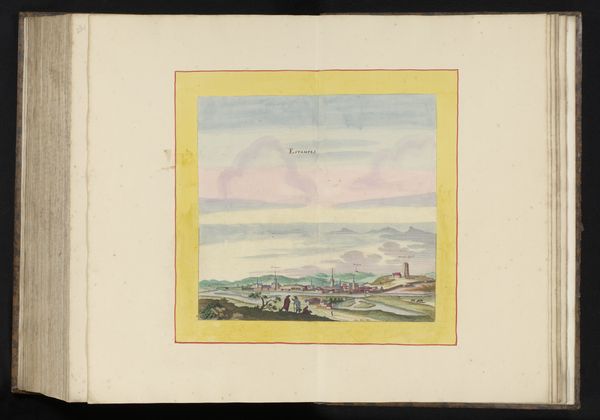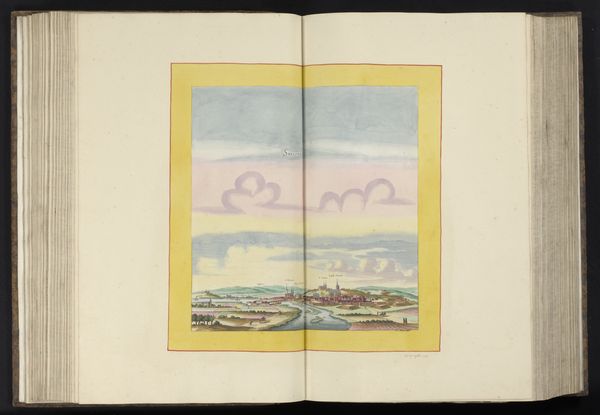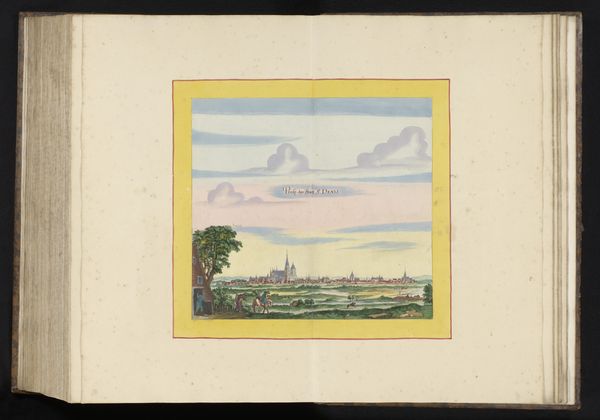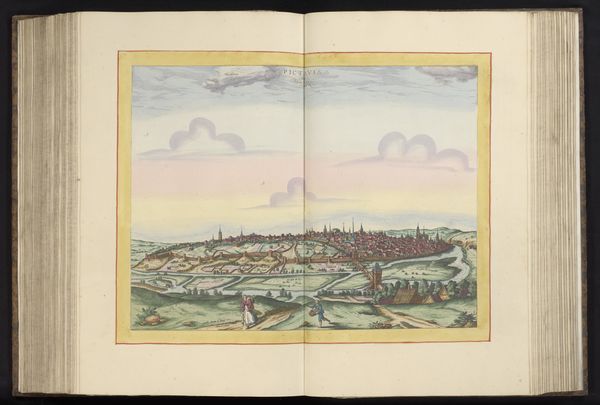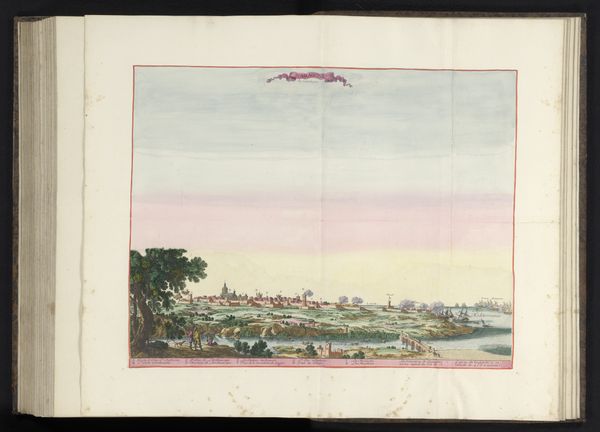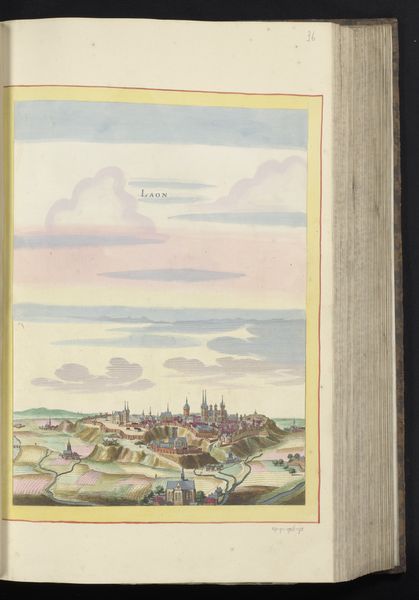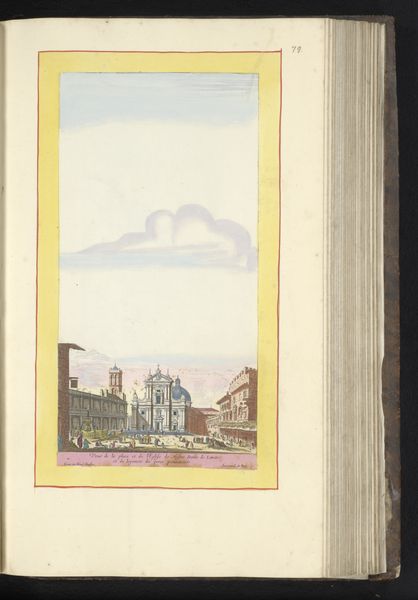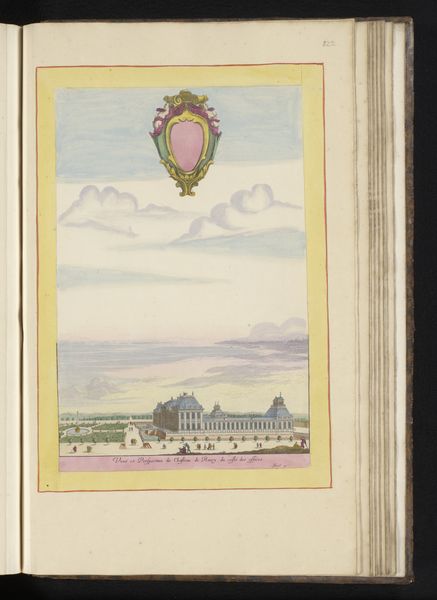
drawing, print, watercolor
#
drawing
#
baroque
# print
#
landscape
#
perspective
#
watercolor
#
coloured pencil
#
cityscape
Dimensions: height 362 mm, width 227 mm, height 532 mm, width 320 mm
Copyright: Rijks Museum: Open Domain
Curator: Let’s turn our attention to this intricate rendering of Montpellier, titled “Gezicht op Montpellier in vogelvluchtperspectief”, or “Bird’s-eye View of Montpellier.” It dates roughly from 1610 to 1657. Editor: It’s rather charming! I’m struck by the soft pastel hues—that delicate transition from rose to sky-blue—offset against the miniature detail of the city itself. A strange harmony, isn’t it? Curator: Indeed. Consider the historical context. Cityscapes like this weren't merely aesthetic; they served as strategic documents. Montpellier was a significant urban centre—the image is not just capturing topography; it's an assertion of power. Maps became political tools, portraying controlled space. Editor: The use of line certainly supports that reading. Observe how the artist has structured the image. The strong horizontal divisions – sky, cityscape, foreground – give a sense of order. Note the winding river in the foreground too. It creates an intentional frame. It all feels very controlled, deliberate. Curator: Precisely. And the fact that it is anonymous also speaks to the way the representation served the purposes of larger institutions and individuals with interests in mapping territory for a variety of ends. Its initial production was less about artistry and more about utility, offering valuable intelligence regarding resources and military installations. Editor: Still, I can't ignore the drawing itself. The use of watercolor over print...that contrast between hard line and fluid wash is incredibly striking. I wonder about the intended audience; who was meant to interpret these signs and symbols? Curator: People in positions of authority, mostly. This perspective was about visualizing control, projecting it onto those who could use it for governing— or potentially dominating—the city. Editor: And there’s a sense of that imposed order radiating outward, even now. Although the piece feels very much of its time, with its careful symbolism. Curator: A testament to how maps can be far more than simple representations, shaping perceptions, controlling narratives, and serving very definite interests. Editor: Exactly, this small artwork condenses power, art, and spatial strategy. Very striking.
Comments
No comments
Be the first to comment and join the conversation on the ultimate creative platform.
